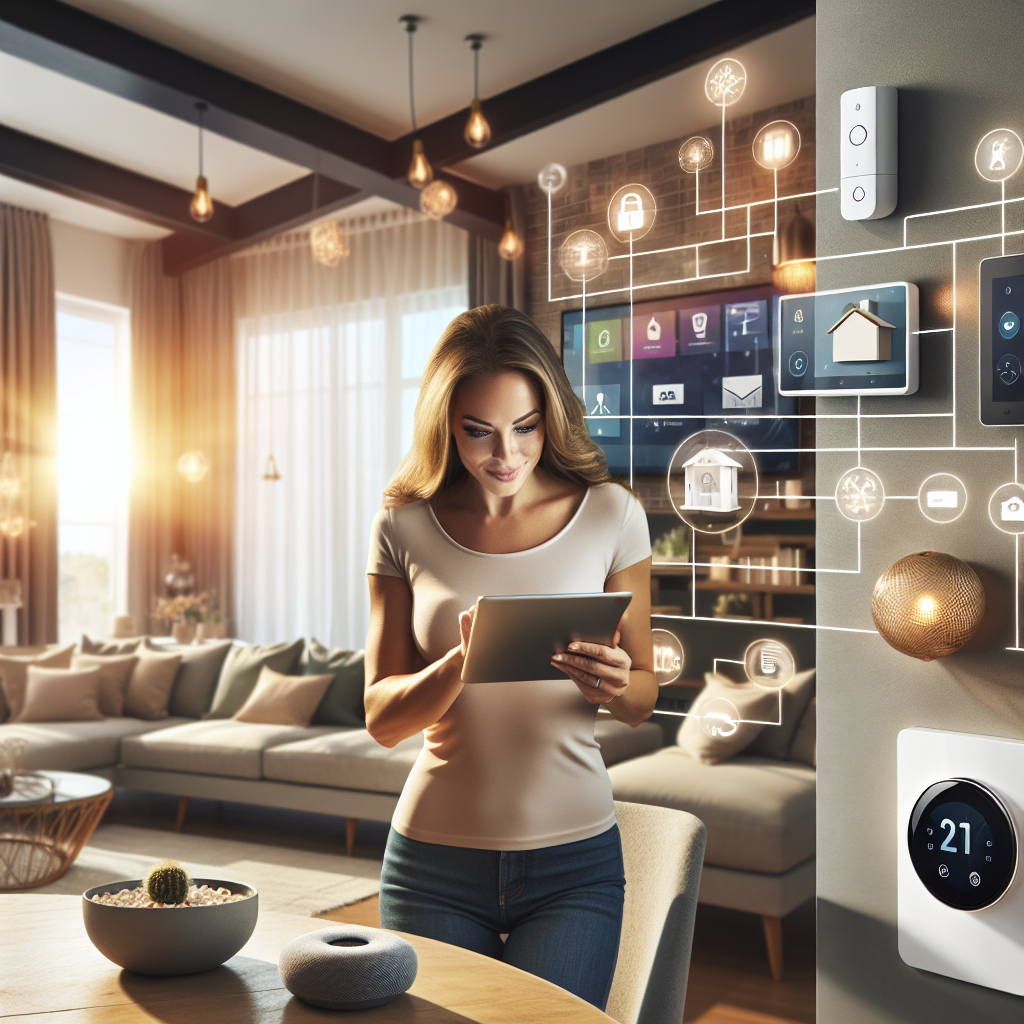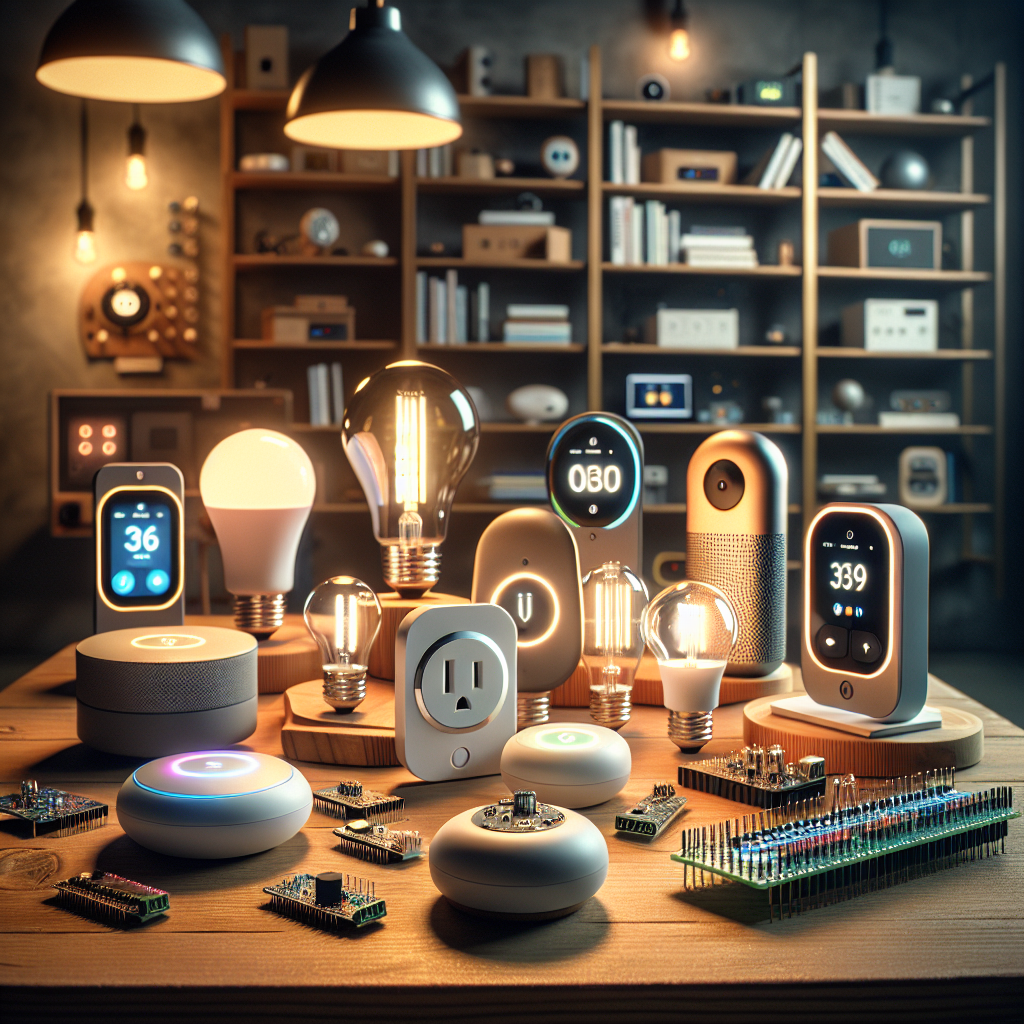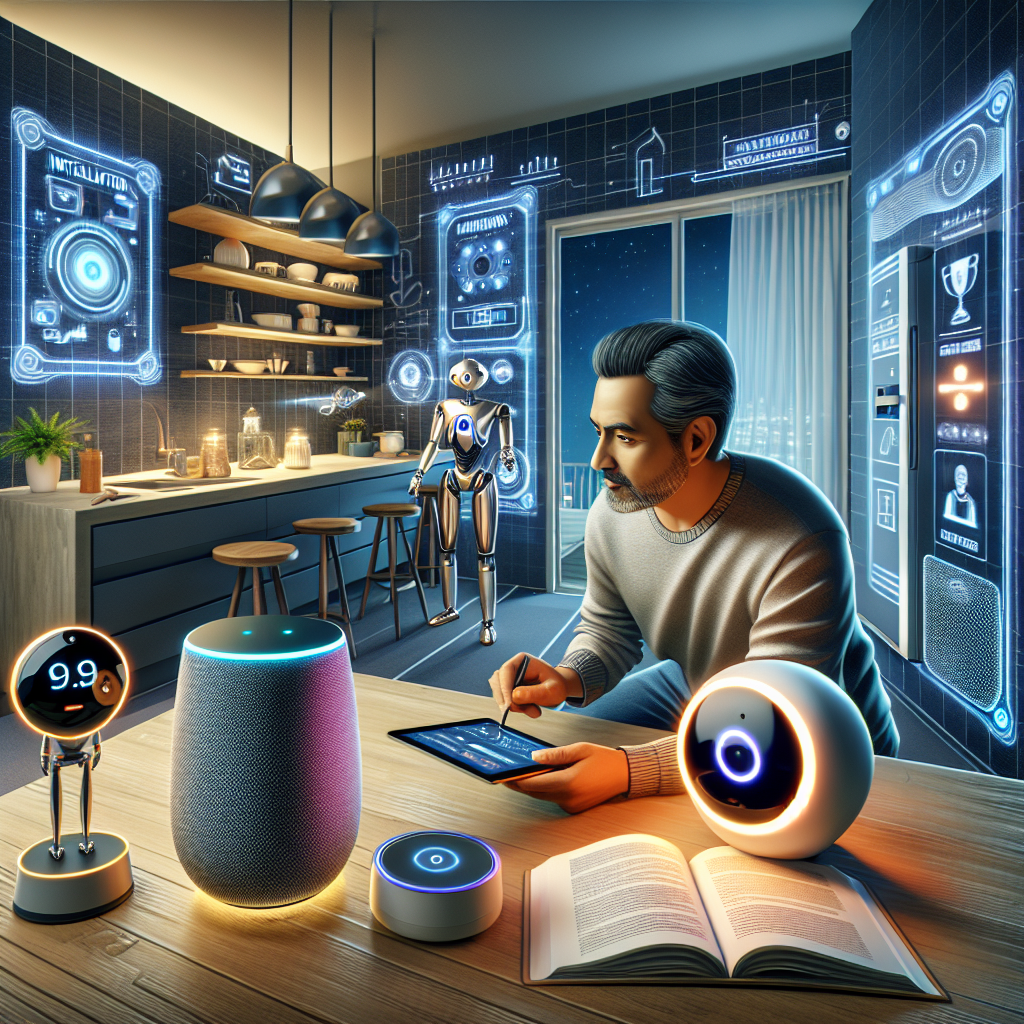In an era where convenience and efficiency are top priorities, smart home devices have emerged as a game-changer for DIY enthusiasts. From thermostats that learn your habits to security cameras that offer peace of mind, the world of smart home technology is constantly evolving. This article delves into the latest innovations in smart home devices that cater to the needs of DIY enthusiasts looking to upgrade their homes with cutting-edge technology. Get ready to explore the possibilities of creating your very own smart home with these exciting gadgets and devices that are sure to impress even the most discerning DIY enthusiast.
Understanding Smart Home Devices
Smart home devices refer to electronic gadgets and appliances that can connect to a network to provide automated control and monitoring remotely. These devices are designed to enhance convenience, efficiency, and security within the home environment, offering a seamless integration of technology into everyday tasks. Understanding the components and functionalities of smart home devices is essential for DIY enthusiasts looking to customize and optimize their living spaces.
- Defining Smart Home Technology
- Smart home technology encompasses a range of devices such as smart thermostats, lighting systems, security cameras, door locks, and voice assistants that can be controlled remotely via smartphone or voice commands.
-
These devices often utilize Internet of Things (IoT) technology to communicate with each other and with the user, creating a network of interconnected devices that work together to streamline home management.
-
Benefits of Smart Home Devices for DIY Enthusiasts
- DIY enthusiasts can leverage smart home devices to automate routine tasks, such as adjusting temperature settings, turning lights on and off, or monitoring home security, allowing for greater control and customization of their living spaces.
- These devices offer energy-saving benefits by enabling users to optimize their home’s energy consumption based on usage patterns and preferences, ultimately leading to cost savings and environmental sustainability.
- Additionally, smart home devices provide enhanced security features, such as remote monitoring and alerts for potential intrusions, fire, or water leaks, giving DIY enthusiasts peace of mind and added protection for their homes.
Essential Smart Home Devices for DIY Enthusiasts
Smart Thermostats
Smart thermostats have revolutionized the way homeowners control their heating and cooling systems. These devices offer features like remote access through smartphone apps, learning capabilities to adjust temperature settings based on usage patterns, and energy-saving suggestions. DIY enthusiasts can easily install smart thermostats themselves, without the need for professional assistance, making them a popular choice for those looking to upgrade their homes.
Smart Lighting Systems
Smart lighting systems allow users to control the brightness, color, and schedule of their lights from anywhere using a smartphone or voice commands. DIY enthusiasts can set up these systems without the need for rewiring their homes by opting for wireless smart bulbs or smart plugs. With the ability to create customized lighting scenes and automate lighting based on occupancy, smart lighting systems offer both convenience and energy efficiency for DIY home improvement projects.
Smart Security Cameras
Smart security cameras provide homeowners with peace of mind by offering real-time monitoring of their property. These cameras come equipped with features such as motion detection, night vision, and two-way audio communication. DIY enthusiasts can install these cameras themselves, positioning them strategically around their home to enhance security. Some newer models even offer facial recognition technology and cloud storage for video footage, adding an extra layer of protection to the smart home ecosystem.
Smart Plugs and Outlets
Smart plugs and outlets are simple yet effective devices that can turn any traditional appliance into a smart one. DIY enthusiasts can easily plug in these devices and control them remotely through a smartphone app or voice commands. Smart plugs and outlets offer benefits such as energy monitoring, scheduling capabilities, and the ability to create automation routines. These devices are cost-effective solutions for making existing appliances part of a smart home setup without the need for complex installations.
Smart Speakers and Virtual Assistants
Smart speakers and virtual assistants have become central hubs for controlling various smart home devices through voice commands. These devices offer features like music streaming, weather updates, and smart home integration. DIY enthusiasts can set up these speakers themselves, connecting them to other smart devices to create a seamless home automation experience. With the ability to answer questions, set reminders, and control multiple devices with a single command, smart speakers and virtual assistants are essential tools for DIY enthusiasts looking to build a smart home ecosystem.
Installation and Setup Tips for DIY Enthusiasts
Smart home devices have revolutionized the way we interact with our living spaces, offering convenience, efficiency, and security. For DIY enthusiasts looking to incorporate these innovations into their homes, successful installation and setup are crucial. Here are some tips to consider:
- Researching Compatibility and Integration
Before purchasing smart home devices, it is essential to research their compatibility with existing systems and other devices. Ensuring that the devices can seamlessly integrate with each other will prevent issues such as connectivity problems or limited functionality. Look for devices that support common protocols like Zigbee or Z-Wave for broader compatibility.
- Ensuring Proper Connectivity
Proper connectivity is key to the optimal performance of smart home devices. When setting up your devices, consider the placement of your Wi-Fi router to ensure a strong and reliable signal throughout your home. Additionally, some devices may require a hub for connectivity, so factor this into your setup to avoid any disruptions in communication between devices.
- Customizing Settings and Automation
Once your devices are connected and integrated, take the time to customize settings and automation to suit your preferences. Many smart home systems offer customization options that allow you to create schedules, routines, and triggers based on your daily activities. By personalizing these settings, you can maximize the benefits of your smart home devices and tailor them to your specific needs.
Troubleshooting Common Issues with Smart Home Devices

Smart home devices have revolutionized the way we interact with our living spaces, offering convenience and efficiency like never before. However, like any technology, they are not immune to issues that DIY enthusiasts may encounter. Understanding how to troubleshoot common issues can help maximize the benefits of these devices.
-
Connectivity Problems
One of the most common issues DIY enthusiasts face with smart home devices is connectivity problems. Whether it’s a Wi-Fi-enabled thermostat that won’t connect to the network or a smart speaker that keeps dropping its Bluetooth connection, issues with connectivity can be frustrating. To troubleshoot this problem, start by checking the device’s network settings and ensuring that it is within range of the Wi-Fi router. Rebooting the device and the router, as well as updating the device’s firmware, can also help resolve connectivity issues.
-
Software Updates and Compatibility Issues
Software updates are essential for keeping smart home devices running smoothly and securely. However, sometimes these updates can cause compatibility issues with other devices or the home’s network. DIY enthusiasts may encounter issues such as devices not responding to commands or experiencing slow performance after an update. To troubleshoot this problem, check for any available updates for all devices in the network and ensure they are compatible with each other. Resetting the devices and reconfiguring their settings can also help resolve compatibility issues.
-
Privacy and Security Concerns
As smart home devices become more prevalent, privacy and security concerns have become increasingly important. DIY enthusiasts may worry about potential data breaches or unauthorized access to their devices. To address these concerns, it is crucial to regularly update the devices’ security settings and passwords. Using strong, unique passwords for each device and enabling two-factor authentication can enhance the security of smart home devices. Additionally, being mindful of the data collected by these devices and reviewing privacy settings can help mitigate privacy risks.

Advanced DIY Projects with Smart Home Devices
Smart home enthusiasts are constantly pushing the boundaries of what is possible with DIY technology. By incorporating the latest innovations in smart home devices, they are able to create advanced projects that enhance the functionality and convenience of their homes.
- Creating a Smart Home Hub
- Building a centralized smart home hub allows DIY enthusiasts to control all their devices from one central location. This hub acts as the brain of the smart home, enabling seamless communication between different devices and systems.
- By using devices such as smart speakers or hubs like Raspberry Pi, enthusiasts can customize their smart home hub to meet their specific needs and preferences.
-
Integrating voice control features, sensors, and actuators into the smart home hub enhances automation capabilities and simplifies daily tasks.
-
Integrating Multiple Devices for Seamless Control
- DIY enthusiasts can take their projects to the next level by integrating multiple smart devices to create a cohesive and interconnected home environment.
- By connecting devices such as smart lights, thermostats, security cameras, and door locks, enthusiasts can create a comprehensive smart home ecosystem that works together seamlessly.
-
Using platforms like IFTTT or Home Assistant, enthusiasts can set up complex automation routines that trigger actions across different devices based on predefined conditions or events.
-
Implementing Home Automation Routines
- Home automation routines allow DIY enthusiasts to streamline their daily tasks and improve the efficiency of their smart home setup.
- By creating routines that automatically adjust lighting, temperature, and other settings based on time of day or occupancy, enthusiasts can save time and energy while enhancing comfort and convenience.

- Advanced DIY projects may involve setting up custom scripts or programming logic to create sophisticated automation routines that cater to specific needs and preferences.
Future Trends in Smart Home Technology
As smart home technology continues to evolve, there are several key trends that DIY enthusiasts should keep an eye on:
-
Artificial Intelligence Integration
- Advancements in artificial intelligence (AI) are revolutionizing the way smart home devices operate.
- AI-powered assistants like Amazon’s Alexa and Google Assistant are becoming increasingly integrated into smart home ecosystems, allowing for more intuitive and personalized interactions.
- Machine learning algorithms are being used to analyze user behavior patterns and optimize smart home device settings automatically.
-
Energy Efficiency Innovations
- Smart home devices are increasingly focusing on energy efficiency to help users reduce their environmental impact and save on utility bills.
- Innovations such as smart thermostats that learn users’ preferences and adjust heating and cooling settings accordingly are gaining popularity.
- Energy monitoring systems provide real-time data on energy consumption, enabling homeowners to make informed decisions about their usage.
-
Expansion of IoT Ecosystems
- The Internet of Things (IoT) is driving the expansion of interconnected smart home ecosystems, allowing for seamless communication between devices.
- DIY enthusiasts can now create custom automation routines that involve multiple smart devices working together to enhance convenience and efficiency.
- Integration with third-party platforms and services is expanding, offering users more flexibility and control over their smart home setups.
FAQs: Smart Home Devices for DIY Enthusiasts: Exploring the Latest Innovations
What are some popular smart home devices that DIY enthusiasts can easily install and set up on their own?
There are various smart home devices that are popular among DIY enthusiasts, including smart thermostats, smart light bulbs, smart plugs, smart security cameras, and smart door locks. These devices are designed to be user-friendly and can typically be installed and set up without the need for professional assistance.
How can DIY enthusiasts ensure that their smart home devices are compatible with each other and work seamlessly together?
To ensure compatibility and seamless integration of smart home devices, DIY enthusiasts should look for devices that are compatible with common smart home platforms such as Amazon Alexa, Google Assistant, and Apple HomeKit. When choosing smart devices, it is also important to consider whether they use common communication protocols such as Wi-Fi, Zigbee, or Z-Wave, as this will help ensure that the devices can easily communicate with each other.
What are some advanced smart home devices that DIY enthusiasts can consider integrating into their home automation systems?
For DIY enthusiasts looking to take their smart home setup to the next level, there are advanced devices such as smart sensors, smart irrigation systems, smart blinds, and smart home hubs that can be integrated into their home automation systems. These devices offer additional features and capabilities that can enhance the overall functionality and convenience of a smart home.
How can DIY enthusiasts troubleshoot common issues with their smart home devices?
When encountering common issues with smart home devices, DIY enthusiasts can troubleshoot by checking the device’s connectivity, ensuring that the device is properly paired with the hub or app, and checking for software updates. It is also helpful to refer to the device’s user manual or online resources for troubleshooting tips and solutions. If the issue persists, reaching out to the manufacturer’s customer support team for assistance can also be helpful.